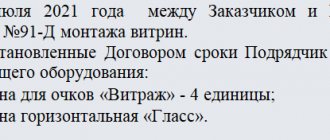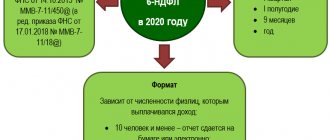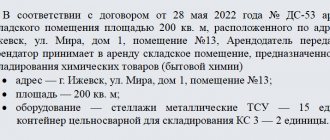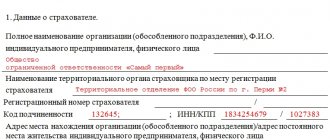How are regulations regulated?
A vehicle requires fuel to operate. Each category of car requires different volumes of fuel and lubricants. The Ministry of Transport has developed a special standard - this is the fuel consumption rate for car brands. The standard allows you to determine how much fuel and lubricants a specific brand of vehicle requires to support the technological process. The standards are developed only in relation to the operating process of vehicles. For example, it is unacceptable to use values to calculate the write-off of fuel and lubricants during repair, adjustment or testing. For technological purposes, additional fuel consumption standards (FLC) should be established.
The Ministry of Transport introduced the standards by a separate Order No. AM-23-r dated March 14, 2008 (as amended on September 20, 2018). The document establishes several categories of standards for fuel and fuel consumption:
- Basic standard for gasoline consumption in liters per 100 km in running order.
- Transport standard in liters per 100 km in operation (during transport work), including:
- cost standard for a bus taking into account curb weight and nominal passenger load;
- consumption standard for dump trucks, taking into account equipment and nominal vehicle load.
- Transport standard for a truck in liters per 100 ton-kilometers, determined during transport work.
Standards are set in liters, for example, for gasoline or diesel fuel. Or the standards are fixed in cubic meters if, for example, transport consumes gas.
Write-off of fuels and lubricants according to waybills
If the enterprise is not a motor transport enterprise, then it is not required to draw up a daily waybill.
Each enterprise has the right to set the frequency of filling it out, based on its production activities - daily, every ten days or monthly.
The only condition is the correct justification for the consumption of fuel and lubricants, the possibility of determining it in order to write it off on the basis of the waybill. The enterprise should decide on the accounting method in order to be able to write off consumed fuel.
As a rule, the driver refuels the vehicle himself using the funds allocated for these purposes, after which he submits an advance report to the accounting department of the enterprise.
He encloses a gas station receipt issued for the purchase of fuel from him. The material accountant credits fuel to account 10 “Materials”. The option of concluding an agreement with a vehicle refueling company to pay for fuel and lubricants non-cash using special cards cannot be ruled out.
At the end of the past month, the gas station provides complete information about the volume of fuel, its cost, which was supplied by it using the fuel card.
Capitalization is carried out to account 10 by a material accountant or an individual account of the second order is opened. The consumed amount of fuel and lubricants is written off on the following accounts:
- 26 “General business expenses”;
- 44 “Sales expenses”.
- 20 “Main production”;
The choice of account remains with the enterprise, which must take into account the specifics of production activities, technical characteristics, make and model of individual vehicles. In such a situation, fuel is written off based on the waybill filled out by the driver.
It is among the primary documents.
It indicates the route, its total mileage, the amount of fuel at the beginning of the working day and at the end of it. As a rule, the difference in fuel volumes is written off at its actual cost.
Costs must be justified and not exceed established fuel consumption standards.
Is it possible to develop individual standards?
Whether or not to use the standards of the Ministry of Transport in your work is the decision of the company’s management. That is, at the legislative level there are no requirements for the mandatory use of NRT.
The Tax Code does not require standardization of costs for fuels and lubricants either according to the corporate income tax or under the simplified tax system. A similar position is supported by the Ministry of Finance (Letters dated March 22, 2019 No. 03-03-07/19283, dated September 27, 2018 No. 03-11-11/69335). Each organization must make its own decision about working with fuel standards.
Cost standards are allowed to be developed independently. For example, an institution, based on the recommendation of the Ministry of Transport, approves its own standards. The indicators correspond to the real characteristics of vehicles used in the process of life.
The ministry's recommendations are just standard values calculated based on the general characteristics of car brands. Despite the correction factors, in practice the values differ significantly from the actual costs. Therefore, organizations have the right to approve their own indicators.
Approve standard values by local order.
An example of writing off fuel and lubricants using waybills
> > > April 15, 2021 All materials of the story documents and forms will help you: Write-off of fuel and lubricants according to waybills - you will find an example of the algorithm for such write-off in the article - should be correctly organized in any company.
Let us consider the features of such a write-off in more detail. Writing off the cost of fuel and lubricants as expenses, as in the case of any other assets, should be carried out on the basis of supporting documents.
The most common document is the act of writing off fuel and lubricants. To document the company's expenses, a primary document is attached to such a document, usually in the form of waybills (PL).
The waybill records the number of kilometers traveled by the employee’s car during a work shift (or work assignment), and the amount of fuel consumed, based on standard indicators or actual measurements. ATTENTION! PLs are not grounds for writing off fuel and lubricants as expenses.
An alternative to a waybill can be, for example:
- GLONASS and GPS data.
- tachograph data;
In this case, the taxpayer has the right to use all 3 sources - waybill, tachograph data and satellite navigation systems - for the most reliable reflection of information on fuel costs. IMPORTANT! Waybills must be used by all transport enterprises transporting passengers or cargo, regardless of the fact of using automatic mileage recording devices (clause
2 tbsp. 6 of the Road Transport Charter). Companies that are not classified as such have the right to use other documents (resolution of the Federal Antimonopoly Service of the Moscow District dated September 18, 2013 in case No. A40-19421/13-99-60).
When using PL, the company must approve the procedure for writing off fuel and lubricants according to waybills. If PLs are not used, then it is optimal to confirm gasoline consumption with reports from the above-mentioned automatic mileage accounting devices (letter of the Ministry of Finance of Russia dated June 16, 2011 No. 03-03-06/1/354).
The most important type of information reflected in waybills is the amount of fuel consumed.
How to count
Officials identified three main concepts:
| Basic NRT | This is the standard cost of fuel and lubricants. Installed separately for each brand of vehicle. Takes into account individual designs, curb weight, type of fuel consumed and other characteristics. The type of flow is applicable for standard, typified situations. |
| Transport NZT | This type of regulatory use is applied taking into account the characteristics of the transport operation of the unit. In essence, this is a basic standard, recalculated taking into account the carrying capacity, towing force, and the rated load of cargo or passengers. That is, a standard taking into account the performance characteristics of the car. |
| Operational NRT | This is a real cost standard, which is recalculated taking into account correction factors. These are basic and transport NRT, which take into account the operating conditions of the vehicle (terrain, climate, temperature conditions and other operating features). |
Each of the standard values is recalculated in relation to the base value, taking into account correction factors. A detailed table of fuel consumption standards for 2021 reveals values by car brand. Abbreviations in the table:
- B - gasoline;
- D - diesel fuel;
- LPG - liquefied petroleum gas;
- CNG is compressed natural gas.
| Model, brand, modification of the car | Basic rate, l/100 km | Type of fuel |
| VAZ-1111 "Oka" | 6,5 | B |
| VAZ-11113 "Oka" (VAZ-11113-2L-0.75-35-4M) | 5,6 | B |
| VAZ-11183 "Kalina" (VAZ-21114-4L-1,596-81-5M) | 8,0 | B |
| VAZ-2104 | 8,5 | B |
| VAZ-21041 (VAZ-21067.10-4L-1,568-74,5-5M) | 9,1 | B |
| VAZ-21043 (VAZ-2103-4L-1.45-71-5M) | 8,3 | B |
| VAZ-21043 (VAZ-2103-4L-1,451-71,5-4M) | 9,0 | B |
| VAZ-2105, -21051, -21053 | 8,5 | B |
| VAZ-2106 (VAZ-2106-4L-1.57-75.5-5M) | 8,5 | B |
| VAZ-2106 (VAZ-2106-4L-1.57-75.5-4M) | 9,0 | B |
| VAZ-21061 | 9,0 | B |
| VAZ-21063 (VAZ-2130-4L-1.77-82-5M) | 9,0 | B |
| VAZ-2107 (VAZ-2103-4L-1.45-72.5-4M) | 8,6 | B |
| VAZ-21072 (VAZ-2105-4L-1.3-63.5-4M) | 8,9 | B |
| VAZ-21074 (VAZ-2106-4L-1.57-75.5-5M) | 8,5 | B |
| VAZ-21074 (VAZ-21067-4L-1,568-74,5-5M) | 8,9 | B |
| VAZ-2108, -2108 “Sputnik”, -21081, -21083, -2109 | 8,0 | B |
| VAZ-21093 (VAZ-2111-4L-1,499-79-5M) | 7,7 | B |
| VAZ-21093; -21099 1.5i (VAZ-21083-20-4L-1.5-71-5M) | 7,5 | B |
| VAZ-21099 (VAZ-2111-4L-1,499-79-5M) | 7,8 | B |
| VAZ-2110 1.5i (VAZ-21083-20-4L-1.5-71-5M) | 7,4 | B |
| VAZ-2110-010 (VAZ-2110-4L-1,499-73-5M) | 7,8 | B |
| VAZ-21102 (VAZ-2111-4L-1,499-79-5M) | 7,5 | B |
| VAZ-21103 (VAZ-2112-4L-1,499-92-5M) | 7,7 | B |
| VAZ-21104 (VAZ-21124-4L-1,596-90-5M) | 8,4 | B |
| VAZ-2111 (VAZ-2111-4L-1,499-79-5M) | 7,6 | B |
| VAZ-21112-00 1.6 (VAZ-21114-4L-1,596-80-5M) | 8,3 | B |
| VAZ-21113 (VAZ-2112-4L-1,499-92-5M) | 7,8 | B |
| VAZ-2112 (VAZ-2112-4L-1,499-92-5M) | 7,7 | B |
| VAZ-21140 (VAZ-2111-4L-1,499-79-5M) | 7,9 | B |
| VAZ-21150 (VAZ-2111-4L-1,499-79-3,94-5M) | 7,4 | B |
| VAZ-2120 (VAZ-2130-4L-1,774-82-5M) | 10,7 | B |
| VAZ-212090 "Bronto" armor. (VAZ-2130-4L-1,774-82-5M) | 12,5 | B |
| VAZ-2121, -21211 | 12,0 | B |
| VAZ-21213 (VAZ-21213-4L-1,690-80-5M) | 11,5 | B |
| VAZ-21213B armor. (VAZ-21213-4L-1.69-79-5M) | 12,1 | B |
| VAZ-21214-20 “Chevrolet Niva” (VAZ-21214.10-4L-1,689-82-5M) | 10,9 | B |
| VAZ-21218 (VAZ-21213-4L-1.69-79-5M) | 11,9 | B |
| VAZ-212182 armored (VAZ-21213-4L-1.69-79-5M) | 12,3 | B |
| VAZ-212300 "Chevrolet Niva" (VAZ-2123-4L-1.69-80-5M) | 10,5 | B |
| VAZ-2131 (VAZ-21213-4L-1.69-80-5M) | 11,3 | B |
| VAZ-21310 (VAZ-2130-4L-1,774-82-5M) | 11,5 | B |
| VAZ-213102 "Bronto" armor. (VAZ-2130-4L-1,774-80-5M) | 12,4 | B |
| VAZ-21312 (VAZ-2130-4L-1,774-82-5M) | 11,4 | B |
| VAZ-2302 “Bison” (VAZ-2121-4L-1.57-78-4M) | 11,5 | B |
| GAZ-13 | 20,0 | B |
| GAZ-14 | 22,0 | B |
| GAZ-24, -24-10, -24-60 | 13,0 | B |
| GAZ-24-01, -24-03, -24-11, -24-14, -24T | 13,5 | B |
| GAZ-24-02, -24-04 | 14,0 | B |
| GAZ-24-07 | 16,5 | CIS |
| GAZ-24-12, -24-13 (with engine ZMZ-402, -402.10) | 13,5 | B |
| GAZ-24-12, -24-13 (with engine ZMZ-4021, -4021.10) | 14,0 | B |
| GAZ-24-17, -24-25 | 16,5 | CIS |
| GAZ-3102 (with engine ZMZ-4022.10) | 13,0 | B |
| GAZ-3102 (Chrysler-4L-2,429-137-5M) | 10,7 | B |
| GAZ-3102 (Toyota 3RZ-FE-4L-2,694-152-5M) | 11,2 | B |
| GAZ-3102, -3102-12 (ZMZ-4062.10-4L-2.3-150-4M) | 12,5 | B |
| GAZ-3102-12; GAZ-3102 (ZMZ-4062.10-4L-2.3-150-5M) | 12,0 | B |
| GAZ-310200 (Toyota-6V-3,378-194-4A) | 13,8 | B |
| GAZ-310200 (Rover-8V-3.95-182-5M) | 13,5 | B |
| GAZ-31022 (ZMZ-4021.10-4L-2,445-90-4M) | 13,9 | B |
| GAZ-310221 (ZMZ-40210D-4L-2,445-81-5M) | 13,1 | B |
| GAZ-310221 (ZMZ-40620D-4L-2.3-131-5M) | 11,5 | B |
| GAZ-31029 (Rover-4L-1,994-140-5M) | 11,5 | B |
| GAZ-31029 (ZMZ-402; 402.10 - 4L-2,445-100-4M) | 13,0 | B |
| GAZ-31029 (ZMZ-4021; 4021.10 - 4L-2,445-90-4M) | 13,5 | B |
| GAZ-3105 (8V-3.4-170-5M) | 13,7 | B |
| GAZ-3110 (ZMZ-4026.10; -40200F-4L-2,445-100-4M) | 13,0 | B |
| GAZ-3110 (Rover-4L-1,996-136-5M) | 10,7 | B |
| GAZ-3110 (ZMZ-4020 OM-4L-2,445-100-5M) | 12,2 | B |
| GAZ-3110 (ZMZ-4062.10-4L-2,287-150-5M) | 11,4 | B |
| GAZ-3110 (ZMZ-40210D; -4021-4L-2,445-90-5M) | 13,0 | B |
| GAZ-3110 (ZMZ-4026.10; -402-4L-2,445-100-5M) | 12,1 | B |
| GAZ-3110 (ZMZ-40620D-4L-2.3-131-5M) | 11,5 | B |
| GAZ-3110-551 (Chrysler-4L-2,429-137-5M) | 10,6 | B |
| GAZ-31105 (ZMZ-40620D-4L-2.3-131-5M) | 11,5 | B |
| ZAZ-1102 | 7,0 | B |
| ZIL-114 | 24,0 | B |
| ZIL-117 | 23,0 | B |
| ZIL-4104 | 26,0 | B |
| ZIL-41047 (8V-7.68-315-3A) | 26,5 | B |
| IZH-2125, -21251, -2126 | 10,0 | B |
| LuAZ-1302 | 11 | B |
| Moskvich-2136, -2140, -2141 (all modifications) | 10,0 | B |
| Moskvich-2141 “Yuri Dolgoruky” (Renault-4L-1,998-113-5M) | 8,6 | B |
| Moskvich-2141-22 (UZAM-3317-4L-1.7-85-5M) | 9,4 | B |
| Moskvich-2141-22 (UZAM-3320-4L-2.0-91-5M) | 9,6 | B |
| Moskvich-21412-01 (UZAM-331.10-4L-1,478-72-5M) | 8,5 | B |
| Moskvich-21412-01 (UZAM-3313-4L-1,815-85-5M) | 9,0 | B |
| Moskvich-214145 “Svyatogor” (Renault-4L-1,998-113-5M) | 8,8 | B |
| Moskvich-2142 “Prince Vladimir” (Renault-4L-1,988-113-5M) | 8,9 | B |
| Moskvich-2142 “Ivan Kalita” (Renault-4L-1,988-145-5M) | 10,2 | B |
| UAZ-31512 (ZMZ-4025.10-4L-2.45-90-4M) | 15,5 | B |
| UAZ-31512 (ZMZ-40260F-4L-2,445-100-4M) | 15,4 | B |
| UAZ-31512 (UMZ-4178-4L-2,445-76-4M) | 15,1 | B |
| UAZ-31514 (ZMZ-4025.10-4L-2,445-90-4M) | 16,7 | B |
| UAZ-31514 (ZMZ-40210L-4L-2,445-81-4M) | 15,5 | B |
| UAZ-31514 (UMZ-41780V-4L-2,445-76-4M) | 15,8 | B |
| UAZ-31514 (UMZ-402100-4L-2,445-74-4M) | 15,6 | B |
| UAZ-31517 (HR 492 NTA -4L-2,393-100-4M) | 11,0 | D |
| UAZ-31519 (UMZ-4218.10-4L-2.89-98-4M) | 14,5 | B |
| UAZ-31519 (UMZ-4218-4L-2.89-84-4M) | 15,9 | B |
| UAZ-31519 (UMZ-4218-4L-2.89-98-4M) | 14,9 | B |
| UAZ-315195 (ZMZ-4090011-4L-2,693-128-5M) | 13,5 | B |
| UAZ-315195 Hunter (ZMZ-40900G-4L-2,693-128-4M) | 13,8 | B |
| UAZ-3153 SBA-4UM (armored) (UMZ-4218-10 -4L-2.89-98-4M) | 16,6 | B |
| UAZ-3153 (UMZ-4218-4L-2.89-84-4M) | 15,4 | B |
| UAZ-3159 “Bars” (ZMZ-4092.10-4L-2.7-133-5M) | 16,5 | B |
| UAZ-31601 (UMZ-421.10-10-4L-2.89-98-5M) | 15,3 | B |
| UAZ-31604 (VM-425LTRV-4L-2.5-105-5M) | 13,2 | D |
| UAZ-3162 SBA 10U (armored) (UMZ-421.10-4L-2.89-98-4M) | 16,0 | B |
| UAZ-31622 (ZMZ-4092.10-4L-2.69-130-5M) | 13,7 | B |
| UAZ-3163-10 “Patriot” (ZMZ-40900R-4L-2,693-128-5M) | 13,5 | B |
How fuel and lubricants are written off using waybills
37 Contents of the page The waybill is a document tested by time and accounting practice. It allows you to take into account the consumption of fuel and lubricants by vehicles, write off, and justify the inclusion of fuel and lubricant costs in tax and accounting.
Based on the waybill data, the volume of fuel consumed by cars is calculated, and knowing its cost, it is possible to determine the cost of fuel and lubricants. What is the procedure for using waybills in accounting and making calculations on them, what is the regulatory framework for write-offs - our article is devoted to these issues. In addition, an example will show how to write off fuel and lubricants to an accountant based on waybill data.
Write-off of fuel, like other types of inventory items, is carried out on the basis of a write-off act.
Waybills, so-called vouchers, in themselves are not the basis for writing off fuel and lubricants, but the above-mentioned act is drawn up precisely according to the data contained in them. The waybill has several unified forms that reflect the characteristics of the car, the tariffication of the driver’s work, the organizational and legal form of the company using it: for a passenger car, an individual passenger car, trucks, special vehicles, etc. The use of these forms in accounting:
- mandatory for carrier companies if transportation is their main activity (Project No. 152 of September 18, 2008, Ministry of Transport);
- not necessary if the car is used for production or official needs of the company.
In the second case, it is permissible to develop your own voucher forms, taking into account the requirements of Federal Law-402 “On Accounting”, however, in practice, the same unified forms are often used for accounting and write-off of fuel and lubricants.
It is worth noting that as of March 1, 2019, by order of the Ministry of Transport No. 467, changes were made to the procedure for filling out the PL, for example, the possibility of filling out one document for a month was canceled, as was before. Organizations that are not transport companies can draw up this document with such regularity that it allows them to confirm the costs of fuel and lubricants without being guided by orders from the Ministry of Transport.
This conclusion can be drawn from letters from the Ministry of Transport and court decisions (post.
FAS VVO A38-4082/2008-17-282-17-282 from 04/27/09)
Calculation for passenger cars
For a passenger car, the standard is calculated using a special formula:
Qн = 0.01 × Hs × S × (1 + 0.01 × D),
Where:
- Qn is the fuel cost standard, calculated in liters;
- Hs is the basic standard of fuel consumption for a vehicle mileage of 100 km;
- S - specific mileage of the car, calculated in km;
- D - correction factor set to the standard, reflected in %.
The basic standard is determined in accordance with the recommendations of the table of standards for write-off of fuel and lubricants of the Ministry of Transport. For example, separate values are provided:
- for domestic transport until 2014;
- for foreign cars before 2008;
- for foreign brands from 2008 to 2014.
IMPORTANT!
Mileage accounting for calculating standard values is carried out exclusively on waybills. This is a special primary document required to be completed by organizations operating transport. Read about the form and rules for filling it out in the article “Instructions: filling out the waybill for a passenger car.”
The procedure for writing off fuel and lubricants using waybills using an example
- /
- /
September 13, 2021 0 Rating Share We recommend the collection Write-off of fuel and lubricants based on waybills - you will find an example of the calculation further in our material. Properly established write-off accounting will allow you to more carefully control the consumption of fuel and lubricants and avoid their losses.
You will learn how to correctly write off fuel and lubricants using waybills from our material.
Fuel and lubricants is a generally accepted abbreviated name for a group of fuels and lubricants.
These include:
- various types of fuel (diesel, gasoline, gas);
- oils and lubricants (motor oils, transmission oils, various lubricants, etc.).
- special fluids for vehicles (brake, cooling);
Fuel and lubricants can be used by both specialized transport enterprises and ordinary companies that have vehicles used for various needs.
A waybill (PL) is a primary accounting document that reflects the mileage of vehicles.
With its help you can calculate the consumption of fuel materials. Specialized transport organizations that use vehicles to carry out their main activities are required to use the PL with the details that are specified in the order of the Ministry of Transport of Russia “On the procedure for filling out the PL” dated September 18, 2008 No. 152.
ATTENTION! Changes have been made to Order No. 152 and from March 01, 2021, fill out travel sheets in a new way. We talked in more detail. Enterprises for which the use of vehicles is not the main activity can independently develop a form of PL and consolidate it in their accounting policies.
However, it is important not to forget about the norms.
And yet, most often, enterprises prefer to use the PL form from the Decree of the State Statistics Committee of the Russian Federation dated November 28, 1997 No. 78. For a sample of filling out a waybill, see
. Each DP must be noted in a special registration log. In practice, the question often arises with what regularity it is necessary to issue a PL.
Calculation for buses
If the company operates buses in operation, then the standards will have to be calculated differently. To do this, use the following formula:
Qn = 0.01 × Hs × S × (1 + 0.01 × D) + Hot × T,
Where:
- Qн is the fuel and lubricants cost standard, calculated in liters;
- Hs - transport NT consumption, determined for a bus mileage of 100 km, calculated taking into account the passenger load normalized by class and purpose of the bus;
- S is the actual mileage of the bus, determined in km according to the waybill;
- Hoth - standard fuel and lubricant costs for the operation of standard independent heaters, calculated in l/h;
- T — actual operating time of the bus with the heater on, h;
- D—correction factor determined to the standard, %.
The actual mileage of the bus is confirmed by the waybill.
An example of writing off fuel and lubricants using waybills
Write-off of fuel and lubricants based on waybills - you will find an example of an algorithm for such write-off in the article - should be correctly organized in any company.
Let's consider the features of such a write-off in more detail. Write-off of the cost of fuel and lubricants as expenses, as in the case of any other assets, should be carried out on the basis of supporting documents. The most common document is an act on the write-off of fuel and lubricants. To document the company's expenses, a primary document is attached to such an act, usually in the form of waybills (PL). The waybill records the number of kilometers that the employee's car has traveled within the framework of a work shift (or work assignment) , and the amount of fuel consumed, based on standard indicators or actual measurements. ATTENTION!
We recommend reading: Application for a court order to collect the debt of one debtor
PLs are not grounds for writing off fuel and lubricants as expenses. An alternative to a waybill can be, for example:
- GLONASS and GPS data.
- tachograph data;
In this case, the taxpayer has the right to use all 3 sources - waybill, tachograph data and satellite navigation systems - for the most reliable reflection of information on fuel costs. IMPORTANT! Waybills are required to be used by all transport enterprises transporting passengers or cargo, regardless of the fact of using automatic means of mileage recording (Clause 2 of Article 6 of the Charter of Road Transport).
Companies that are not classified as such have the right to use other documents (resolution of the Federal Antimonopoly Service of the Moscow District dated September 18, 2013 in case No. A40-19421/13-99-60). When using PL, the company must approve the procedure for writing off fuel and lubricants according to waybills.
If PLs are not used, then it is optimal to confirm gasoline consumption with reports from the above-mentioned automatic mileage accounting devices (letter of the Ministry of Finance of Russia dated June 16, 2011 No. 03-03-06/1/354). The most important type of information reflected in waybills is the amount of fuel consumed . It can be based on standard and actual indicators. Standard indicators are mandatory only for motor transport enterprises (clause
40 order of the Ministry of Transport of Russia dated June 24, 2003 No. 153)
Calculation for trucks
For freight vehicles, the calculation procedure is more complicated. The calculation takes into account the weight of the cargo, the weight of the trailers, and other transportation characteristics. For dump trucks and tractors, standard values are calculated in a special order.
Formula for calculating the fuel consumption rate for a truck:
Qн = 0.01 × (Hsan × S + Hw × W) × (1 + 0.01 × D),
Where:
- Qn - standard fuel consumption in liters;
- S - mileage of a car or road train, determined in km;
- Hsan is the fuel consumption rate established for the mileage of a car or road train in running order without load.
The last Hsan indicator is calculated separately. To do this, use the formula:
Hsan = Hs + Hg × Gpr, l/100 km,
Where:
- Hs is the basic fuel consumption rate for the mileage of a car (tractor) in running order, l/100 km (Hsan = Hs, l/100 km, for a single car, tractor);
- Hg - fuel consumption rate for the additional weight of a trailer or semi-trailer, l/100 t. km;
- Gpr - trailer or semi-trailer own weight, t;
- Hw—fuel consumption rate for transport work, l/100 t. km;
- W is the volume of transport work, t. km: W = Ggr × Sgr (where Ggr is the mass of the cargo, t, Sgr is the mileage with the cargo, km);
- D — correction factor (total relative increase or decrease) to the norm, %.
Determine the actual mileage using the waybill. Details are in the article “Filling out a new waybill for a truck.”
An example of writing off fuel and lubricants based on waybills - all about taxes
If the enterprise is not a motor transport enterprise, then it is not required to draw up a daily waybill.
Each enterprise has the right to set the frequency of filling it out, based on its production activities - daily, every ten days or monthly.
The only condition is the correct justification for the consumption of fuel and lubricants, the possibility of determining it in order to write it off on the basis of the waybill. The enterprise should decide on the accounting method in order to be able to write off consumed fuel. As a rule, the driver refuels the vehicle himself using the funds allocated for these purposes, after which he submits an advance report to the accounting department of the enterprise.
The option of concluding an agreement with a vehicle refueling company to pay for fuel and lubricants non-cash using special cards cannot be ruled out. Capitalization is carried out to account 10 by a material accountant or an individual account of the second order is opened. The consumed amount of fuel and lubricants is written off on the following accounts:
- 26 “General business expenses”;
- 20 “Main production”;
- 44 “Sales expenses”.
The choice of account remains with the enterprise, which must take into account the specifics of production activities, technical characteristics, make and model of individual vehicles.
In such a situation, fuel is written off based on the waybill filled out by the driver.
As a rule, the difference in fuel volumes is written off at its actual cost. Costs must be justified and not exceed established fuel consumption standards. As for income tax accounting, the cost of fuel and lubricants in accordance with Article 254 of the Tax Code can be included in material costs.
The waybill must be issued on a form with standard form No. 3, which was approved by a resolution of the State Statistics Committee. Its publication was made on November 28, 1997 under number 78. Although an enterprise can develop its own form, which is also not prohibited.
But you should indicate in it all the details included in the required attributes.
Adjustment factors
Standard recalculation of standards does not provide actual indicators. Officials introduced a special correction factor to the fuel consumption rate. There are several correction values at once. They are installed depending on numerous factors of transport operation. The coefficients both increase and decrease the standards.
For example, when operating in winter, vehicles consume more fuel than in the summer months. At the same time, when driving on an open highway, the car consumes less fuel than, for example, when driving around the city or on a dangerous road section.
Fuel and lubricants write-off act
23982 The application of the act for writing off fuels and lubricants (fuels and lubricants) occurs at all enterprises and organizations that have transport equipment on their balance sheets, employ drivers and incur the costs of purchasing the necessary consumables for cars.
The concept of “fuels and lubricants” includes:
- various types of lubricants, etc.,
- petrol,
- brake fluid,
- oil,
that is, in fact, all those liquids that no transport unit can do without. FILES The act refers to primary documentation and is of great importance for the accounting and tax accounting of the organization.
It allows you to calculate the expenses incurred by the company on fuels and lubricants in order to subsequently deduct them from profit, thus reducing the tax base. It should be noted that in addition to the write-off act, to carry out this procedure, you must have one more document: the driver’s waybill, which reflects in detail information about the fuel and lubricants spent, kilometers traveled, time spent on the road and other data.
Waybills must be issued at the beginning of the working day, after which drivers are required to submit them to the accounting department (with an advance report that records the expenditure of cash issued for fuel, as well as checks and receipts). In order to legally write off fuels and lubricants, as well as to correctly draw up the act, the organization must create a special commission consisting of at least two people.
For her appointment, the head of the enterprise issues a separate order. The commission should include employees from various departments, as well as a financially responsible person. In this case, it is advisable to allocate a chairman and ordinary members to the commission.
The commission’s tasks include reconciling actual fuel costs with the standards established by the company (it should be noted that they are different for each type of transport and must be approved separately), conducting test trips with drivers to check the amount of daily fuel, oil consumption, etc. , as well as collection of waybills for the reporting period.
When standards rise
There are quite a lot of reasons for using increasing factors to calculate fuel consumption rates in road transport. The coefficient values vary from 5% to 50%. And in total they give much larger values.
Reasons for increasing fuel consumption standards:
- work in winter - 5-20%;
- operation in mountainous areas - 5-20%;
- complex roads and dangerous sections of roads - 10-30%;
- movement in urban areas - 5-35%;
- the need for frequent technological stops - 10%;
- the need for low speed - 15-35% on average;
- for running in a new car - up to 10%;
- by duration of operation - 5-10%.
These are just the key factors that increase fuel consumption. An exhaustive list is given in Order of the Ministry of Transport of Russia dated March 14, 2008 No. AM-23-r (as amended on September 20, 2018).
Typical mistakes of accountants
Technical errors are common when working with documentation. These are typos, omissions, arithmetic errors, and numerical errors. If you make such a mistake, you can identify it by drawing up final reports when income and expenses do not match the balance.
Methodological errors are rarely discovered. This is due to the competent form of drawing up and processing documents. Typically, forms for writing off fuel and lubricants, waybills are quite simple, employees of the economic departments of the organization do not have problems with their preparation. It is enough to know the receipt, consumption and cost of fuel. Waybills will help you determine the mileage and display the exact balance.
Write-off of fuel and lubricants is now the main part of the activity of any enterprise. It is important to competently and clearly maintain primary documentation and correctly justify the expenses of the enterprise.






